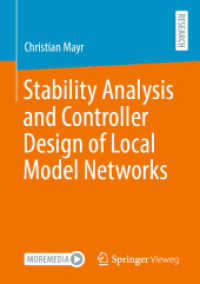- ホーム
- > 洋書
- > 英文書
- > Science / Mathematics
Full Description
The integration of recent studies of food biochemistry with traditional studies of food quantity has begun to reveal the striking importance of food quality to reproduc tion and to the growth dynamics of many aquatic animals.







